Can Young Singaporean Home Buyers Survive The 2021 Property Market?
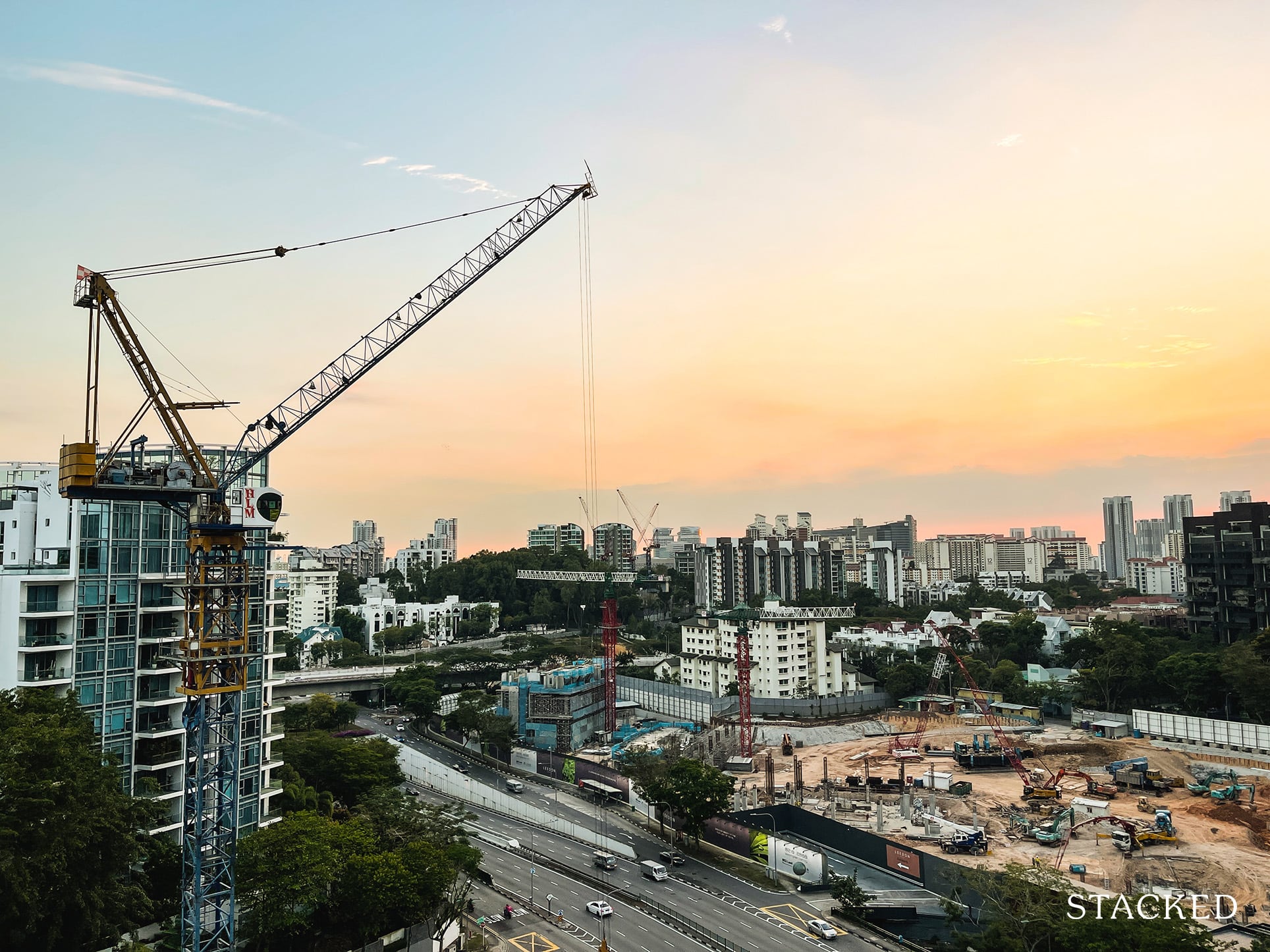
Get The Property Insights Serious Buyers Read First: Join 50,000+ readers who rely on our weekly breakdowns of Singapore’s property market.
A seasoned content strategist with over 17 years in the real estate and financial journalism sectors, Ryan has built a reputation for transforming complex industry jargon into accessible knowledge. With a track record of writing and editing for leading financial platforms and publications, Ryan's expertise has been recognised across various media outlets. His role as a former content editor for 99.co and a co-host for CNA 938's Open House programme underscores his commitment to providing valuable insights into the property market.
Singapore’s property market is booming, with resale flat prices at eight-year-highs, and private home prices rising for four straight quarters. Coupled with job worries over Covid-19, and construction delays, all of this poses a problem for young, first-time home buyers. The hard truth is that, despite the volatile economy, home prices aren’t falling; and sellers have sufficient holding power to demand high prices.
Here’s a look at the issues facing young home buyers:
- Prices are rising in almost all property segments
- Condo prices supported by a slew of HDB upgraders
- The return of Cash Over Valuation (COV), with rising prices for resale flats
- Affordable new homes are often too small for families
- Construction delays coupled with rising rental rates
1. Prices are rising in almost all segments
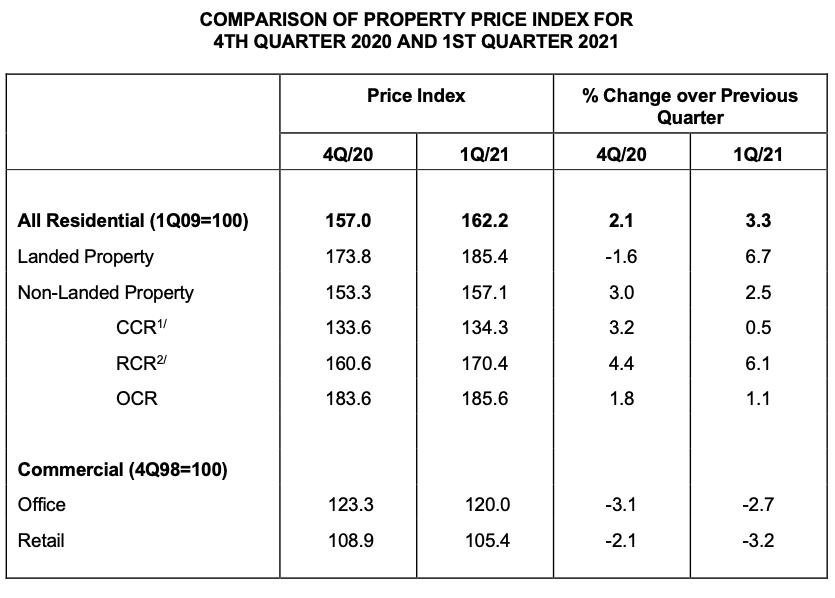
While the CCR and OCR recorded modest increases, it’s the RCR (where most of the younger buyers would be looking at) that has established the biggest increase for non-landed property.
Looking at the supply of private residential units, you can see that the figure has come down to approximately 21,000 to 22,000 unsold units – a far cry from the peak in Q1 2019.
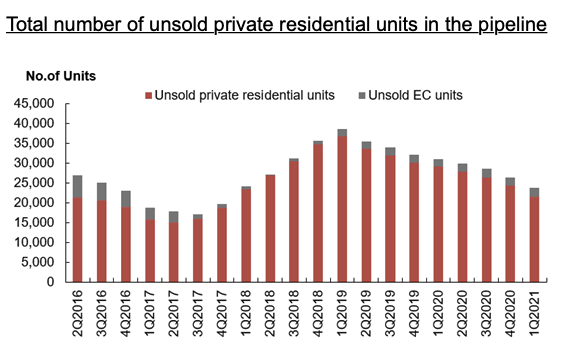
If we were to look at resale condos, it is much of the same story.
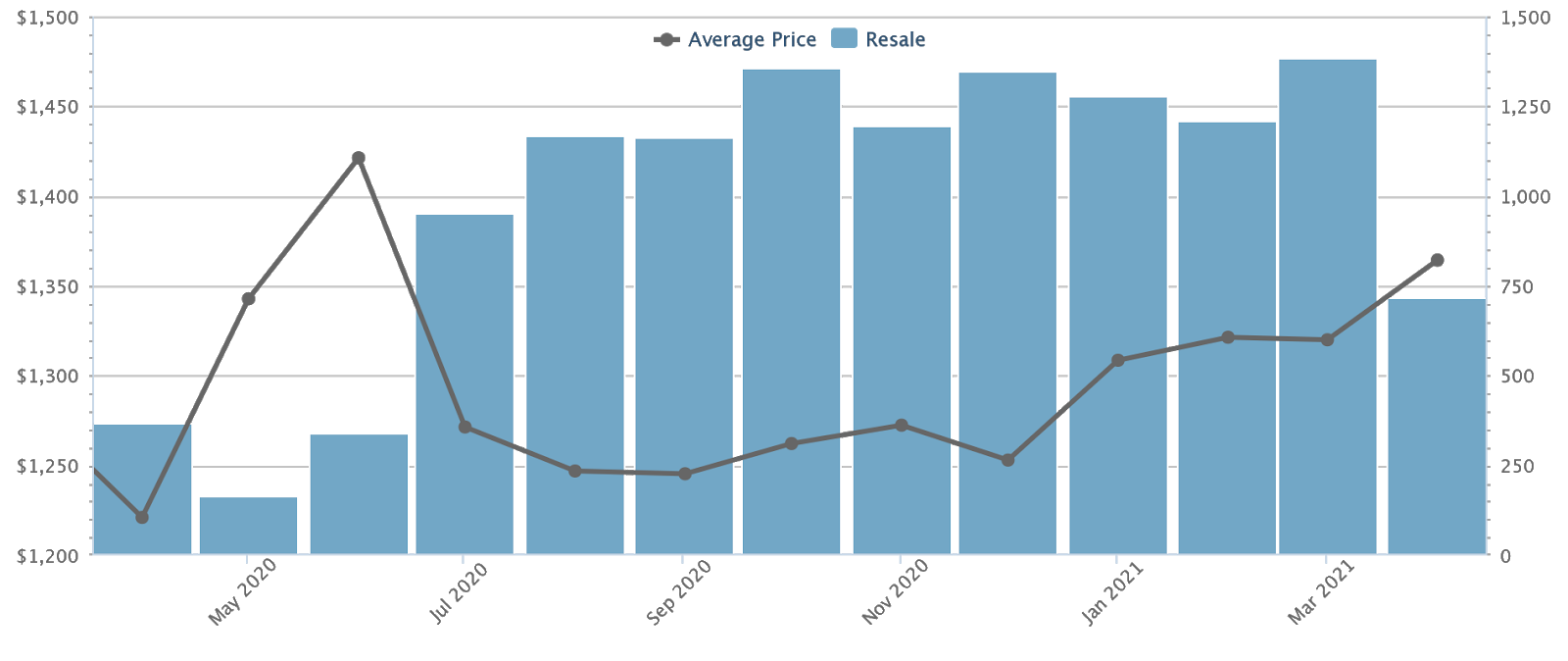
Resale condos have fallen from their last high in June 2020, but have been rising again over the past half of the year. They’re now at $1,364 psf, up from $1,221 psf at the same time last year.
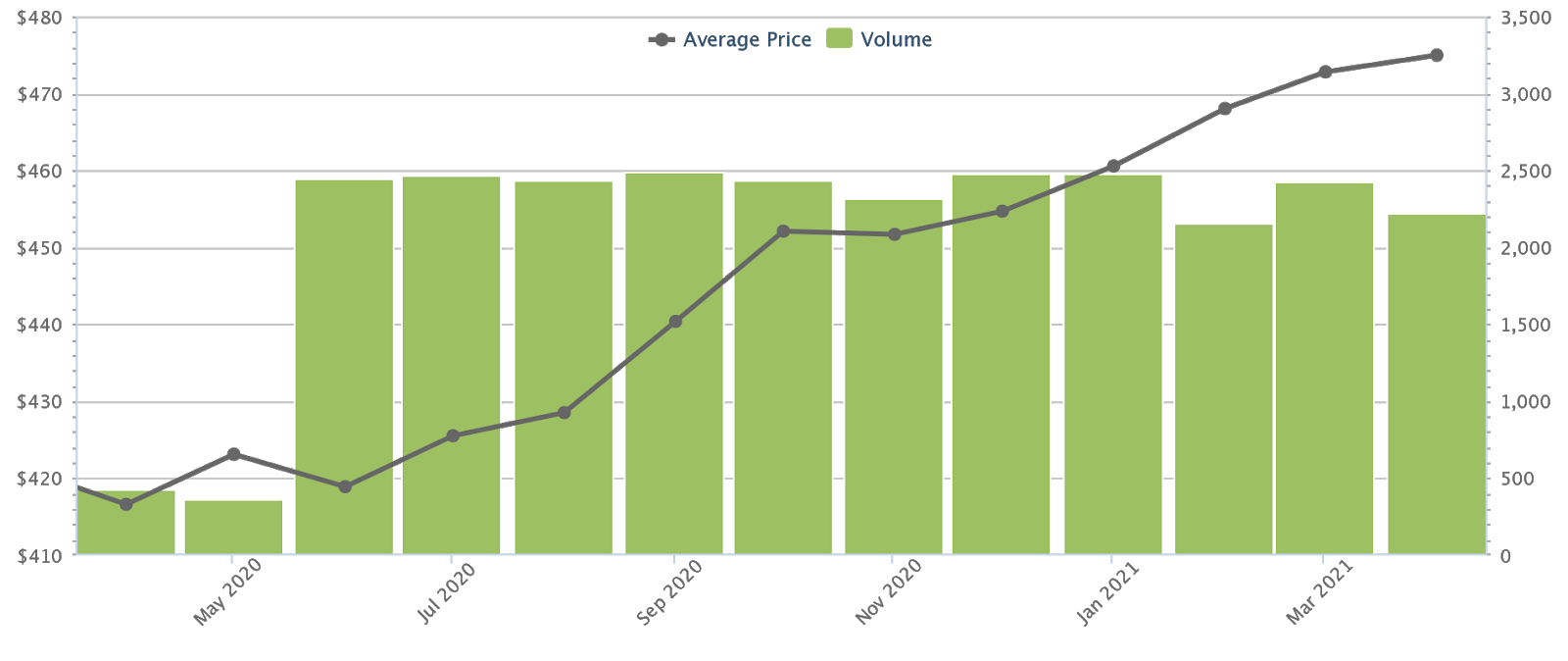
HDB resale flats have seen their most meteoric rise, undoing around seven years of falling prices over the course of 2020 to the present. They now average $475 psf, up from $417 psf a year ago.
It seems that everywhere a new home buyer looks, prices have soared from the pre-pandemic period. Those counting on developer discounts or desperate sellers, due to Covid-19, have more or less seen their plans backfire; a “wait-and-see” approach from the start of 2020 would result in paying more in the current context.
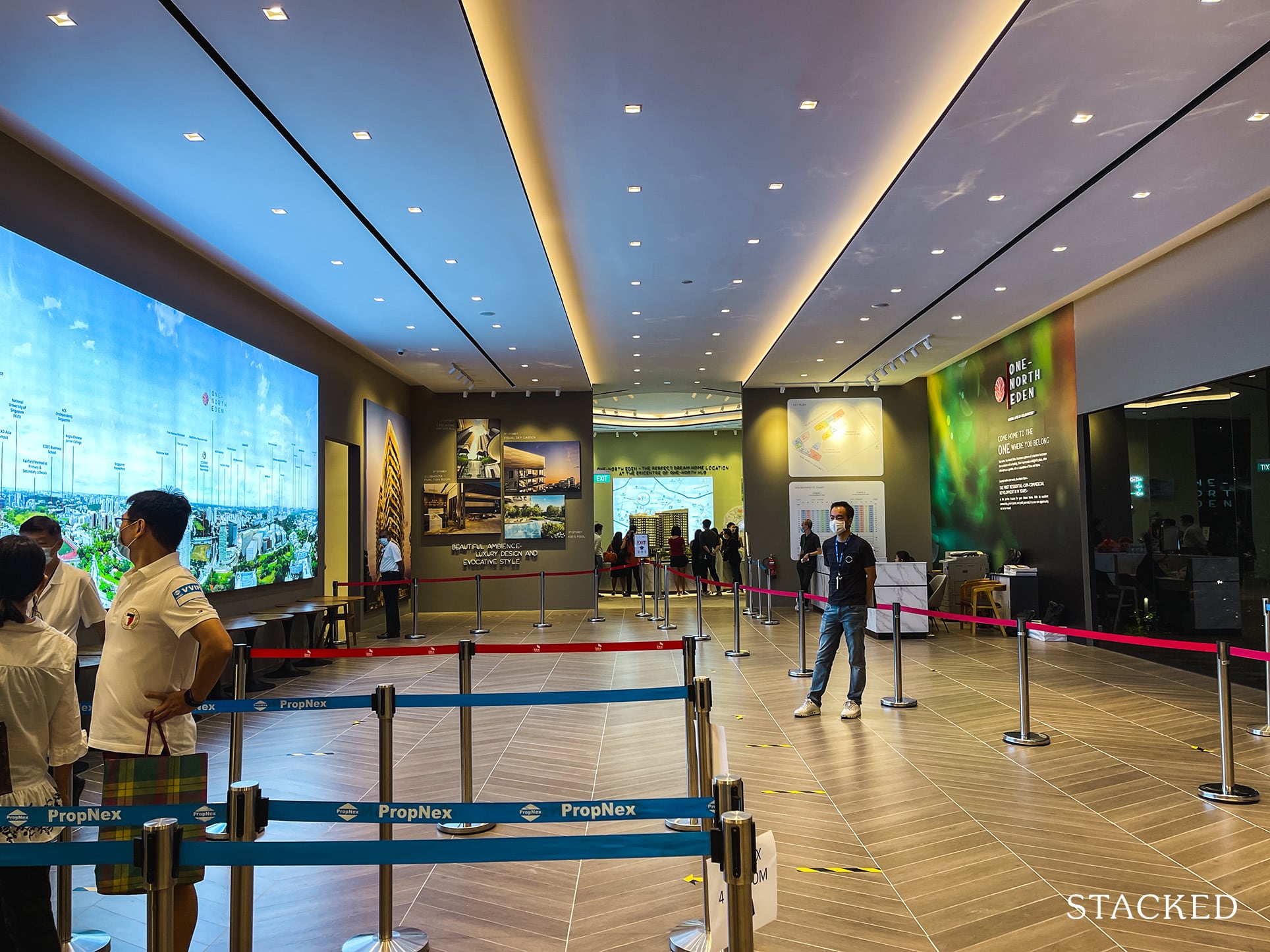
2. Condo prices supported by a slew of HDB upgraders
HDB upgraders currently dominate the Singapore property market, with 50,000+ flats reaching their Minimum Occupation Period (MOP) in 2020 or 2021. By comparison, the number of flats reaching MOP per year, between 2010 and 2018, was just around 9,000.
One of the realtors we spoke to, who declined to be named, cautioned that:
“The main problem for new buyers is the price being supported by upgraders. Because those who have just sold their flat, especially a five-year old flat that is in high demand, are flush with cash; they can afford the down payment to go private. They can even afford to take a smaller loan, to meet the TDSR*, which normally they may not qualify for. This is why you see new launch prices are not falling even with Covid.”
At the same time, HDB upgraders appear to have no shortage of willing buyers, willing to meet their price (see below). As such, a long of younger, first-time home buyers are going to feel priced out.
*The Total Debt Servicing Ratio (TDSR) caps your monthly loan repayment to 60 per cent of your monthly income. If you cannot meet the TDSR, you can – assuming you have the cash – make a bigger down payment to reduce the repayment amount. See our guide to home loans for a detailed explanation.
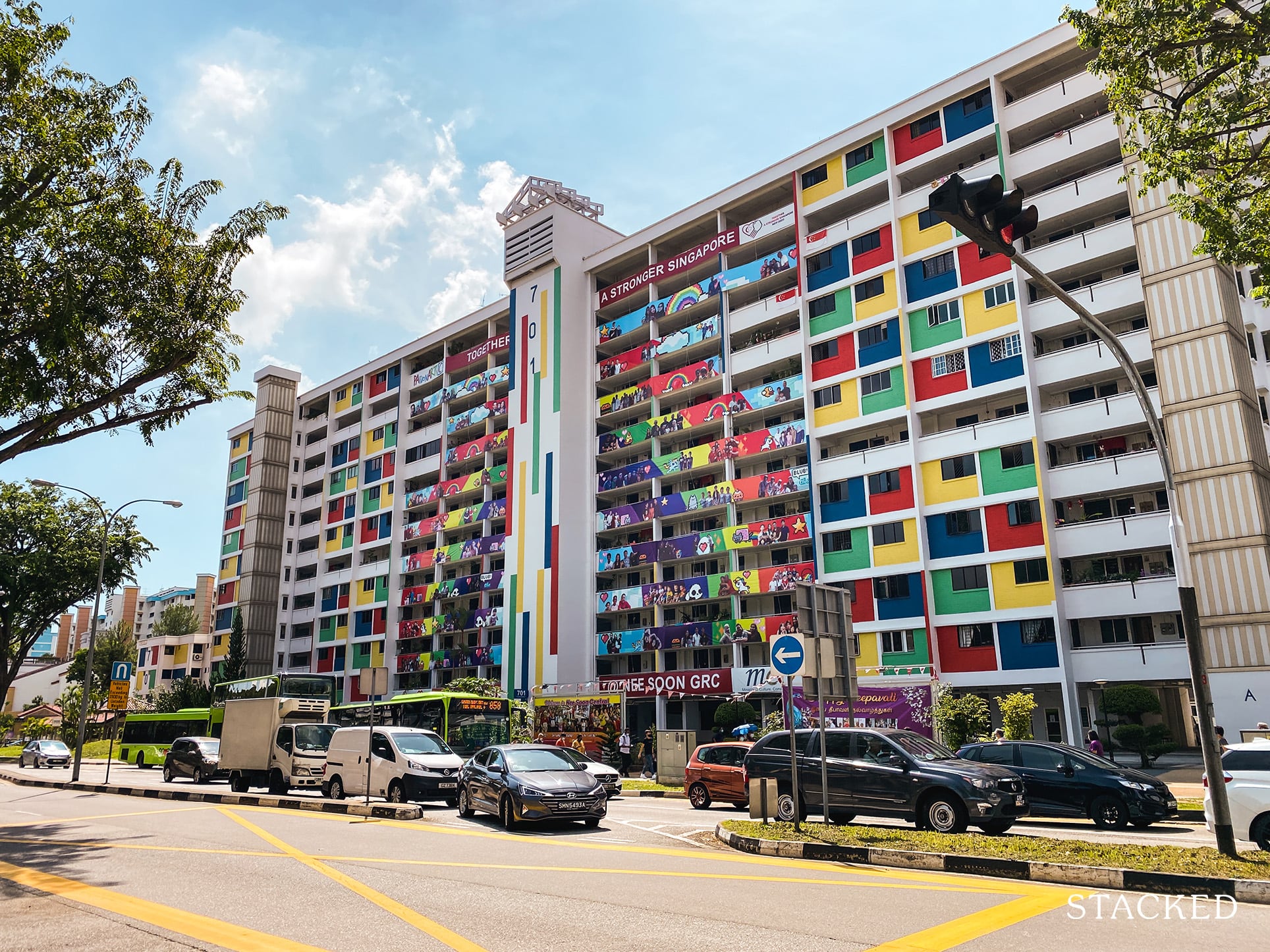
3. The return of Cash-Over-Valuation (COV), with rising prices for resale flats
Due to construction delays (see below), or the unavailability of BTO flats in certain areas, young home buyers may sometimes opt for a resale flat first. This also opens up the possibility for a wider range of grants.
However, there’s a double-whammy that they’ll run into.
The first is the rising resale flat prices, which are at their highest in almost eight years. Analysts and realtors that we spoke to pointed out two reasons, that won’t be going away soon:
The first is the better support for buying old flats, due to a policy change in 2019. The government has allowed more liberal use of CPF when purchasing older resale flats, so long as the lease can last till the youngest buyer is 95 years-old. Gone are previous restrictions, such as older flats needing more than 30 years left on the lease (you can now use your CPF so long as there’s 20 years or less on the lease).
More from Stacked
We Own A 4-Bedder EC In Punggol: Should We Buy A Newer Condo Or An Executive HDB?
Hi! I have some questions about my current situation. Hopefully u can shed some light!
This has raised the prices of even older resale flats, while the prices of newer resale flats (e.g., those that are just five-years old) are already high. Realtors explained that newer resale flats see much strong demand, as buyers can move in immediately but the lease decay is negligible.
As such, whether a resale flat is five-years old or even 40-years old, new home buyers are confronted by higher prices than previous years.
The other issue is the return of Cash Over Valuation (COV). While HDB no longer reveals COV data (this helps to keep it under control), realtors have reported seeing COV rates creep back, with rates of $20,000 to $30,000 appearing even in non-mature towns.

Property Market CommentaryCan We Expect Cash Over Valuation (COV) To Keep Climbing For HDB Flats?
by Ryan J. OngCOV is the portion of the cost that’s above the actual flat valuation. E.g., if your flat price is $370,000, but the valuation is $350,000, then there’s a COV of $20,000. This portion is not covered by an HDB loan or bank loan, so buyers must have sufficient funds to pay it alone. For first-time home buyers on a tight budget, COV could have a serious impact on immediate affordability.
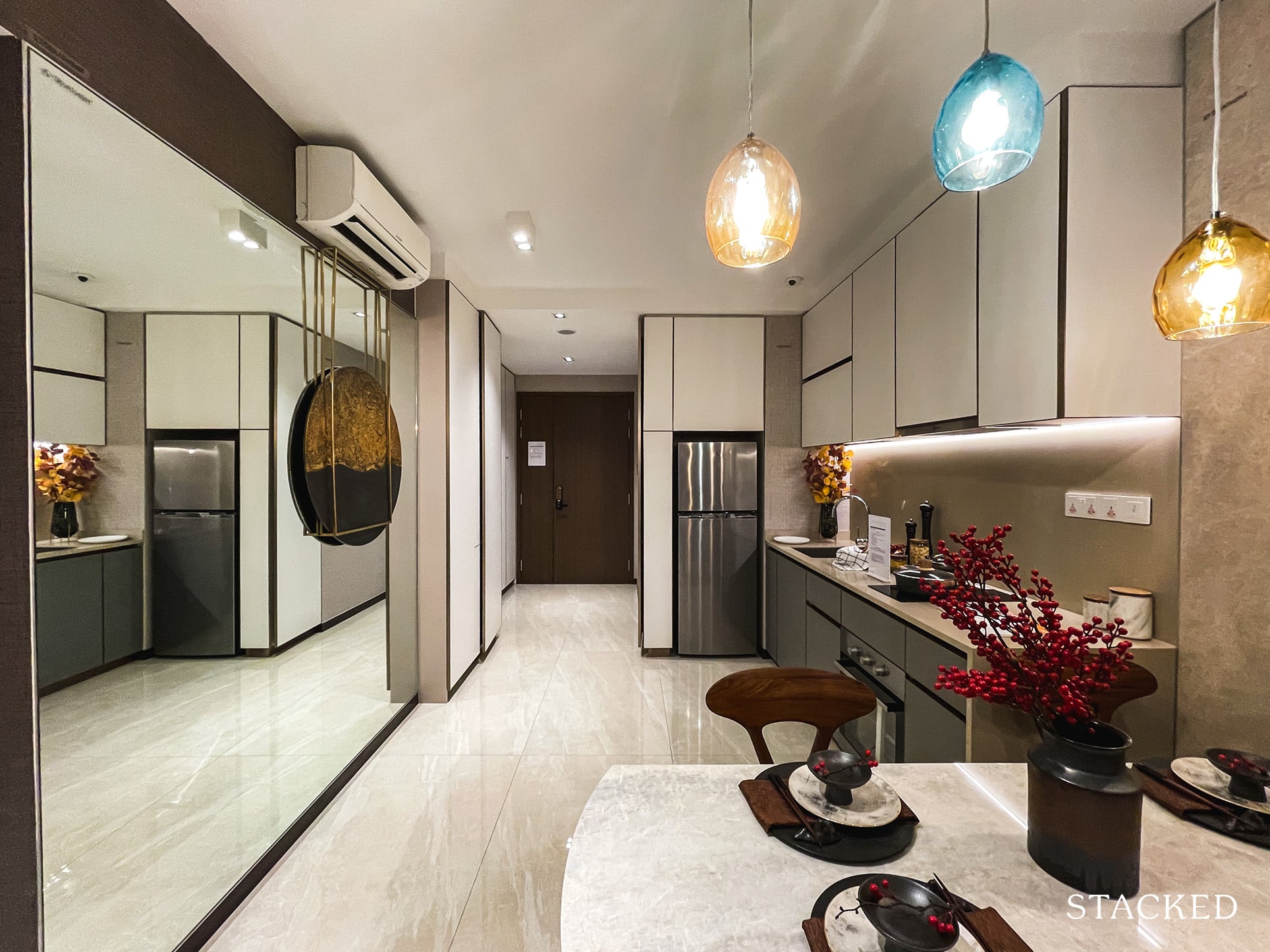
4. Affordable new homes are often too small for families
To keep homes palatable despite rising price per-square-foot, we’ve seen a trend of developers building smaller units. We have, for example, pointed out several new launch condos that are priced under $1.4 million.
However, we hear common complaints that these new condo units are stifling for families. Many units under the $1.4 million mark tend to be around 800 to 900 sq. ft. By comparison, most 4-room flats are about 968 sq. ft.
Young home buyers expecting to have children, or who are living with their parents, may find themselves priced out of the living spaces they need. This leaves them with either BTO flats (with construction delays and availability issues), or resale flats (also with rising prices, and possible COV). It’s a typical rock-and-a-hard-place scenario.
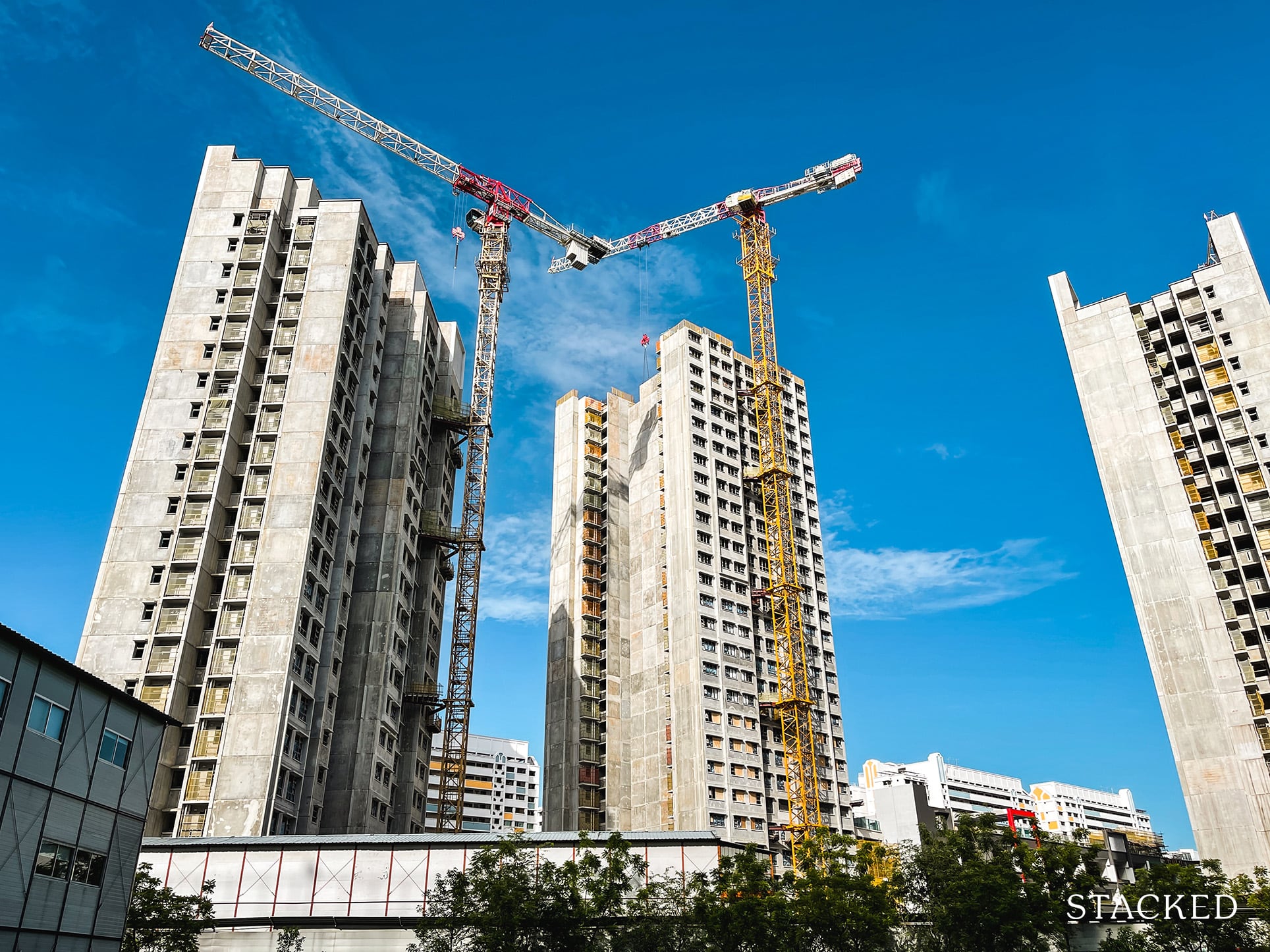
5. Construction delays coupled with rising rental rates
For young home buyers, temporary accommodation can be a challenge. Most of them don’t want to wait two years before moving in with their spouse (potentially three or four years, in the case of BTO flats).
This presents yet another expensive problem:
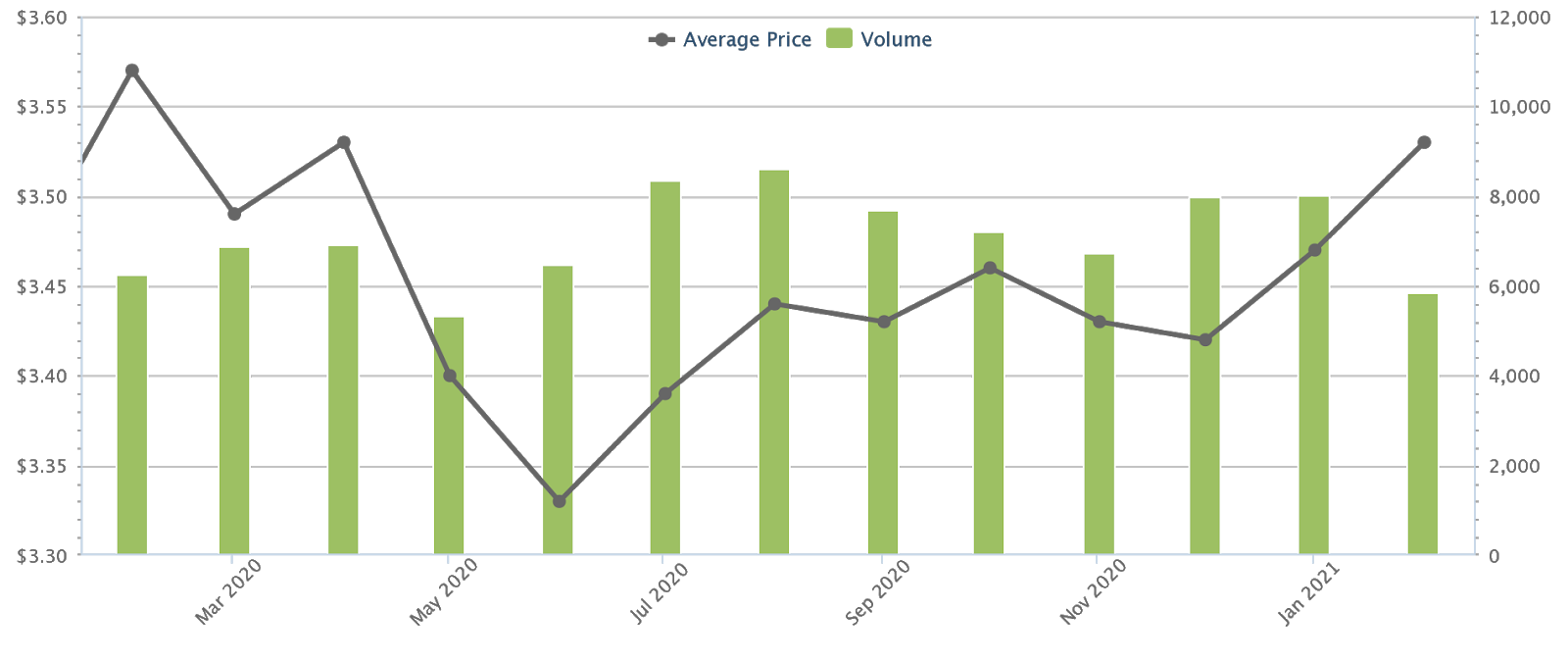
For those looking to rent out a condo, the period of low rental rates came and went in a flash. Condo rental rates plunged to $3.33 psf, in June 2020; but have since climbed back up to $3.53 psf. This is expected to rise even further by end-2021, with the return of foreign tenants (assuming Covid-19 restrictions lift), and possibly more local tenants awaiting construction of their delayed condos / flats.
Young home buyers who opt for new construction will have to budget accordingly (or rent a cheaper HDB flat / stay with their parents).
The best hope for young, first-time home buyers is new cooling measures; but this is speculative.
At the current rate, the property market seems to be headed for potential new cooling measures. In the event that happens, there may be a price dip which offers young home buyers a much-needed break. But it’s speculative to assume this will happen, or that prices will drop even if it does.
At this volatile time, it’s best if genuine home buyers stop trying to outguess the market, and simply move on to properties that meet affordability. The last batch that tried to “wait-and-see” to get lower prices have seen how the opposite can happen, despite a global pandemic. That should give a good sense as to how accurate predictions can get (i.e., not very).
Contact us for personalised help and consultation, if you’re not sure what’s in your price range. You can also follow us on Stacked for market updates, and reviews of new and resale condos alike. If you’d like to get in touch for a more in-depth consultation, you can do so here.
If you’d like to get in touch for a more in-depth consultation, you can do so here.
Ryan J. Ong
A seasoned content strategist with over 17 years in the real estate and financial journalism sectors, Ryan has built a reputation for transforming complex industry jargon into accessible knowledge. With a track record of writing and editing for leading financial platforms and publications, Ryan's expertise has been recognised across various media outlets. His role as a former content editor for 99.co and a co-host for CNA 938's Open House programme underscores his commitment to providing valuable insights into the property market.Read next from Property Market Commentary

Property Market Commentary 2025 Year-End Review Of The Singapore Property Market: What The Numbers Reveal

Property Market Commentary How The HDB Resale Market Performed In 2025, And What It Means For 2026 Prices

Property Market Commentary 4 Key Trends Reshaping Singapore’s New Launch Condo Market In 2026

Property Market Commentary When Renting In Singapore Is The Smarter Move — And Buying Can Wait
Latest Posts

Pro This 21-Year-Old Condo Didn’t Sell Out Initially, Yet Became A Top Performer

Editor's Pick What I Only Learned After My First Year Of Homeownership In Singapore

Singapore Property News Why More Land Doesn’t Automatically Fix Housing In Singapore

On The Market Here Are The Cheapest 4-Room HDB Flats in Central Singapore You Can Still Buy From $490K

Editor's Pick Should We Buy An Old 99-Year Leasehold Condo To Live In: Will It’s Value Fall When The Lease Runs Out?

Pro How A Once “Ulu” Condo Launched In 1997 Became A Top Performer

Editor's Pick I Reviewed A New Launch 4-Bedroom Penthouse At Beauty World

Editor's Pick Why Singaporean Families Are Looking At This Landed Enclave From Around $4M

Singapore Property News Lentor’s First Condo Is Complete — The Early Profits May Surprise You

Property Advice We Own A $800K 1-Bedder And A $1.1M 3-Bedder: Is It Possible To Upgrade To A 4-Bedder Condo?

On The Market These Are Some Of The Cheapest 5-Room HDB Flats Left In Central Singapore

Pro This 698-Unit Ang Mo Kio Condo Launched At The Wrong Time — And Still Outperformed Peers

Singapore Property News $281.2M in Singapore Shophouse Deals in 2H2025 — But That Number Doesn’t Tell the Full Story

Property Investment Insights These Resale Condos In Singapore Were The Top Performers In 2025 — And Not All Were Obvious Winners

Singapore Property News CapitaLand–UOL’s $1.5 Billion Hougang Central Bid May Put Future Prices Above $2,500 PSF


